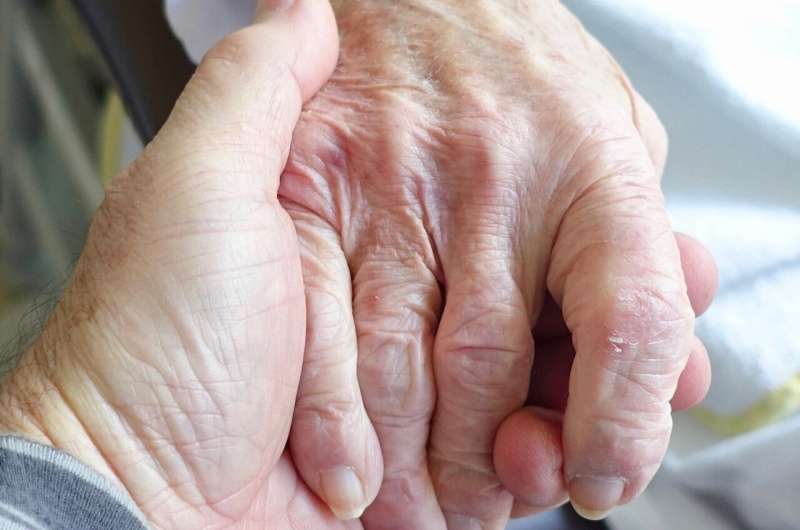This article has been reviewed according to Science X's editorial process and policies. Editors have highlighted the following attributes while ensuring the content's credibility:
fact-checked
peer-reviewed publication
proofread
Study reveals vital role of supportive managers to minimize physical restraint use in care homes

A new review finds that the use of physical restraints on care home residents can be reduced without increasing the risk of falls, when frontline care staff are empowered by supportive managers.
Physical restraints are devices that restrict freedom of movement and are frequently used in residential care homes, such as nursing homes and assisted living facilities. Examples are bed rails or belts that prevent residents from getting out of bed unassisted. These restraints are ethically problematic as they are mostly used in people with dementia who are often unable to consent to their use.
Physical restraints are often intended to prevent falls and fall-related injuries. However, the benefits are often small and come with important negative consequences. For example, the restriction of movement can have negative implications on physical functioning and mobility, actually increasing the risk of falls and care dependency. The measures can also trigger or increase fear or aggressive behavior. For this reason, guidelines and experts recommend avoiding physical restraints in residential care settings.
But how can this be implemented in practice? A Cochrane Review, first published in 2011 and recently updated to reflect the latest research, analyzes the scientific evidence on interventions and strategies to reduce the use of restraints. The team of authors, led by Ralph Möhler of the University Hospital Düsseldorf, identified 11 studies with a total of 19,003 participants, evaluating different intervention approaches.
In their evaluation, the authors found the best evidence for organizational interventions, which were investigated in 4 studies with a total of 17,954 participants. Organizational interventions to reduce the use of restraints consist of different components to function as a package.
They aim to improve knowledge, skills, and strategies to prevent restraint use among both frontline care staff and managers. In three studies, employees designated as 'champions', were trained to develop and implement individual strategies to prevent the use of restraints within their facilities. Managers supported this, including by relieving them of other activities and provide them with sufficient time for their tasks.
Such interventions probably reduce the number of residents with physical restraints in nursing homes by 14%. There was no overall change in the number of residents with falls or fall-related injuries and there was no increase in the prescription of psychotropic medication. In addition, there was no evidence of adverse effects of the interventions.
Based on the study data, the authors calculated that the number of residents with physical restraints could be reduced from 274 to 236 per 1000 individuals, if such interventions were implemented. Focusing on changes on the organizational level seems to be important for achieving long-term effects.
Six studies examined educational interventions addressing staff knowledge and attitudes regarding the use of restraints. The results of these studies were inconsistent and some of the studies had methodological limitations. Therefore, no clear conclusion on the effects of educational interventions can be drawn.
"The results of this review show that physical restraints in nursing homes can be reduced without increasing falls or fall-related injuries," says Ralph Möhler, lead author of the review. "There is no evidence in the reviewed studies that psychotropic medications were prescribed more often. However, education for frontline staff alone doesn't seem to be enough; the support of care home managers plays a decisive role."
The research is published in the Cochrane Database of Systematic Reviews.
More information: Ralph Möhler et al, Interventions for preventing and reducing the use of physical restraints for older people in all long-term care settings, Cochrane Database of Systematic Reviews (2023). DOI: 10.1002/14651858.CD012476.pub3




















